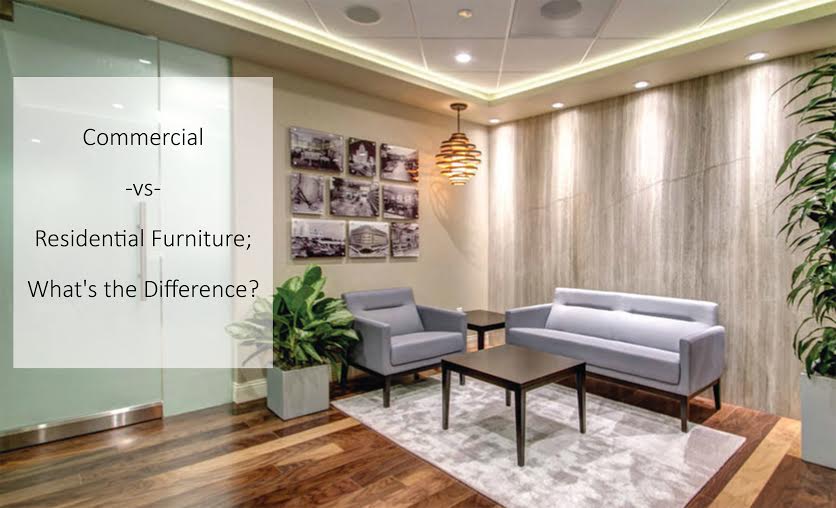Interior Design services for commercial spaces and residential spaces vary greatly.
When you think of interior design, you might be most familiar with residential designers that help with space planning and design for your home. However, there is a specialized niche of interior design focused solely on commercial interior design and space planning as well (also referred to as contract design). You would find these designers skillfully planning spaces for hotels, corporations, gyms, hospitals and medical buildings, and restaurants.
Many commercial interior design firms choose to design for any or all of these types of spaces while others select one targeted specialty in which to focus their expertise (such as office design.)
Designing and selecting furnishings for commercial spaces can be quite different than for residential spaces. Here are some of the most important considerations between the two styles:
PRODUCT SELECTION
Commercial/Contract grade furniture is built with heavy and or continual use in mind. Everything from the interior construction to the exterior fabric is considered.
This furniture is built to take on environmental stressors not experienced in a residential setting (for example rough movement, use by varying different heights & weights of people, and code requirements for fire retardancy and other issues)
Fabric selections are vitally important to maintain the integrity of the piece, as well helping with scratch-resistance, UV-resistance, and easy cleanability.
Commercial furniture is also designed to be durable, easily maintained, and have longer-lasting value. This is important when most large companies schedule upgrades to interior design and furnishings only every 5-15 years (sometimes even longer) and the furnishing must hold up and remain good-looking.
FABRIC SELECTIONS
Fabric selection is a priority for both commercial and residential spaces. As mentioned above, commercial interiors have rigorous code standards for fire retardancy and well as have many more options for protective coatings that may help with cleanability and wear & tear.
Furniture in lobbies, conference rooms, restaurants, and hotels endure much higher traffic use than an upholstery used on residential furniture. Most fabric manufacturers provide information for each fabric that inform the designer as well as the end-user about its content and usability.
ACCESSIBILITY
The Americans with Disabilities Act, along with hundreds of codes and requirements enforced by the national and state governments, requires each commercial space to be designed with the general public in mind, especially those with physical limitations. These codes apply to all areas for the building but focus intently on waiting areas, restrooms, and hallways. Residential architects and designers have their sets of codes and requirements, so it’s always best to check with your Designer, General Contractor, or Architect or check the building codes of your local government.
Commercial furniture manufacturers usually carry ADA-compliant furniture, meaning that these pieces can safely and easily be used by people with disabilities. This can include things like desks with enough legroom to fit a wheelchair, safety bars for bathrooms, and cabinets with U-shaped pulls and/or push latches to enable access for people with manual limitations. To welcome employees and customers of all abilities, make sure to talk with your Designer, General Contract, or Architect about making your space ADA-compliant.
There are many differences between commercial and residential furniture, including the life-span of the product (usually apparent in the length of warranty or service offered after purchase), the quality of the materials used in construction and fabrication, and the reputation of the company/vendor that sells the furniture.
Connect with us on social media!

